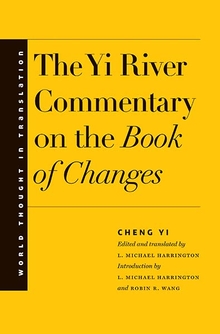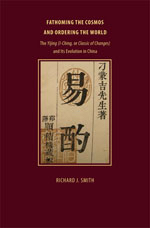
The Yi River Commentary on the Book of Changes
by Cheng Yi, edited and translated by L. Michael Harrington
Introduction by L. Michael Harrington and Robin R. Wang
Yale University Press, 2019
ISBN: 9780300218077
Hardcover, 576 pages
$85 USD
Cheng Yi (1033–1107) lived during the Song dynasty, and was one of the era’s great thinkers. His Yijing commentary greatly influenced subsequent generations. Understanding the Yijing was important, but difficult, it was by then already a 2000-year-old book. Translator L. Michael Harrington, a professor of philosophy, gives a succinct overview of Cheng Yi’s thoughts and his influence on subsequent generations, including our own. He notes an important feature of Cheng’s commentary, that it offers full discussion of the hexagram components, rather than the snippets of explanation and terse definitions common to other commentaries. In addition, Cheng Yi creates a “coherent conceptual structure: the principle that governs the interaction between different capacities and functions in any state of affairs.”
The Yi River Commentary is an excellent companion to I Ching editions of Richard Wilhelm (translated by Cary Baynes), and Wang Bi (translated by Richard John Lynn). These are all dependable translations that introduce readers to particular strains of Yijing interpretations. In Cheng’s presentation, we can, in particular, see the roots of Richard Wilhelm’s work eight centuries later, both using a “teaching voice” that seeks to engage the student in depth.
Translating the Yijing is a difficult task, and Harrington clearly describes methods used in his effort to see the Yijing through Cheng’s eyes. He explains translation choices, as well. One interesting choice, for example, is the name “Ebb” for Hexagram 59 渙, which is “Dispersion/Dissolution” in the classic Wilhelm/Baynes I Ching. Harrington includes an introduction (written with colleague Robin Wang), notes on Cheng’s quotations of other material, extensive glossary, and a thorough index.
Avid Yijing readers will undoubtedly want to compare this translation of Cheng Yi’s work to others. Harrington’s is a model of transparency, detailing sources, methodology, and what material is included. Another English translation of Cheng Yi, by Thomas Cleary, is titled I Ching: The Tao of Organization. As with his other Yijing translations, The Taoist I Ching, The Buddhist I Ching, and I Ching Mandalas (all from Shambhala Books) Cleary has succeeded in his effort to reach an educated popular audience. However, in each translation, he offers little clarity about his source material or methods, and, in this particular case, interpolates modern ideas (e.g., sociology). In addition, Cleary severely edited the original material, leaving out what Harrington estimates to be more than half of Cheng’s comments, in particular, on the Ten Wings as related to each hexagram. An interested reader would have to do their own comparative reading of the original to figure out what Cleary included or omitted, and what of Cheng’s text is actually quotes of other material. Harrington, in contrast, includes thorough information, greatly enriching the reading experience.
The Yi River Commentary is a well-made book physically, with a sturdy hardcover binding, though it weighs in at over two pounds. Unfortunately, the price for this book is set for libraries and specialists, not for the average Yijing reader, who would undoubtedly find this book of interest. The book is missing two key items for general readers: a hexagram finding chart and instructions for how to use the Yijing. Fortunately, these are easily found elsewhere (see our Basics page for such).
The Yi River Commentary is highly recommended for Yijing readers who enjoy pondering the deeper meaning of this ancient book and what it meant to the philosophers of imperial China, and for those readers who may be interested in the sources of modern interpretations.




 Those wishing to learn more about the I Ching (Yijing), the Chinese Book of Changes, have two opportunities this spring.
Those wishing to learn more about the I Ching (Yijing), the Chinese Book of Changes, have two opportunities this spring.




 “As arrogant occupants of 21st-century Earth, who can rightly boast of creating exciting innovations, like the computer, talking paint, and the margarita blender, it serves us to believe we’re also the more enlightened generation.
“As arrogant occupants of 21st-century Earth, who can rightly boast of creating exciting innovations, like the computer, talking paint, and the margarita blender, it serves us to believe we’re also the more enlightened generation.